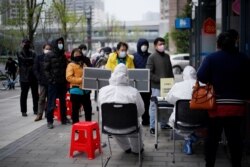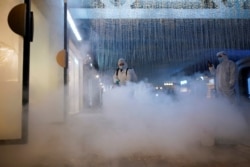After testing negative twice in a row, a coronavirus patient in Wuhan — the former epicenter of the coronavirus outbreak — was discharged recently from one of China’s mobile hospital units.
But her celebration of freedom had barely begun before she got a call from the local health authority who told her the last test she took before leaving the hospital was positive. “I had to go back to the hospital immediately,” the patient said on Weibo, China’s Twitter-like platform. “My residential compound is under lockdown again.”
As China releases more patients who have recovered from the coronavirus, there are an increasing number who are testing positive for the second time. The State Council ’s Joint Prevention and Control Mechanism said last Saturday that second-time infections have been reported in many regions, including Guangdong, Sichuan, Hunan, and Hubei province, where Wuhan is the capital city.
It is not understood why some patients test positive after testing negative, but most virologists believe true second-time infections are extremely rare. Recovered patients have high amounts of antibodies in their blood that fought off the COVID-19 infection, protecting them against a recurrence. That is why in many countries recovered patients are now donating blood plasma for transfusions into sick patients.
Another explanation for the positive tests could be inaccurate testing.
"Testing is not always perfectly sensitive," said William Hanage, associate professor of epidemiology at Harvard T.H. Chan School of Public Health. "Some of those cases you're seeing where it looks as if a person was testing positive, negative, then later tested positive again may be likely explained by one of the intermediate tests just not picking it up when it was there. The amount that that's happening, we don't really know.”
As countries focus on rapidly deploying coronavirus tests, some versions have been rejected for too many false readings.
“At this stage of the pandemic, it's been hard enough managing to identify those people who are infected once. It's going to take a while before we can be secure about who's been infected twice," he added.
Causes of faulty testing
Dr. Jin Dongyan, a virology expert at the University of Hong Kong, said it is nearly impossible for second-time infections to occur in normal individuals. He told VOA in an email that the negative test results from patients before they were discharged could be “false,” leading hospitals to discharge them too early.
Dr. Zhang Boli, one of the 14 members of China’s national research team to prevent and control the outbreak, said even accurate tests can fail to detect small amounts of virus still within the patient.
According to China's latest coronavirus diagnosis and treatment guidelines issued by the National Health Commission on March 4, diagnostic tests are conducted by gathering mucus from nasal cavities using swabs.
However, viruses often stay deep in patients' lungs. "At the time of the test, the sputum in the throat were detected, no virus was not detected, showing that the viral nucleic acid in the patient's body was negative," said Zhang in a recent interview with the official People’s Daily.
"If some people are tested positive for the viral nucleic acid a second time, it is most likely that they have never recovered," Jin told VOA.
How many repeat positives?
Despite the possibility that there could be a large number of people who retest positive after being pronounced “recovered” and released from medical care, China is not tracking these people, even though authorities are ordering them back to quarantine.
Tu Yuanchao, deputy director of Hubei health commission, said that they will not be classified as fresh cases. He told the official Hubei Daily recently, "They were already reported as confirmed cases in their initial test. Therefore, they will not be repeatedly counted as new cases."
China has not been counting as “infected” those people who test positive for COVID-19 but display no symptoms. This policy contradicts World Health Organization guidelines, which recommend tracking asymptomatic patients who test positive because they could still spread the virus.
It remains unclear how many people in China who tested positive again for COVID-19 after being told they were healed from the disease. The central government does not release national numbers. Local numbers reported by different regional officials vary from less than 1% to 14% of recovered patients.
Last month an official study from southern China's Guangdong Province found that as many as 14% of those who had recovered tested positive again in later check-ups. On the other hand, a hospital director in Wuhan last week said the current rate of repeat positives in the city is less than 1%.
“Even Guangdong has 14% of people who retested positive, and you are telling me Wuhan only has 1%?” one netizen asked on Weibo.
Tongji Hospital, which identified the first COVID-19 case in Wuhan, confirmed that five out of 145 patients, or little more than 3%, tested positive again, according to state broadcaster CCTV.
Wang Wei, the hospital’s president, said that these are just “small samples.”
“We need a large-scale epidemiological study to guide our disease surveillance and prevention works,” Wang said during the interview.
With most countries focused on caring for the sick and ensuring adequate health care support for the spike in sick patients, few have managed to carry out widespread testing that will give epidemiologists the data they need to better understand the virus, and why some people are still testing positive for COVID-19, even after they recover.
VOA's Steve Baragona contributed to this story.










